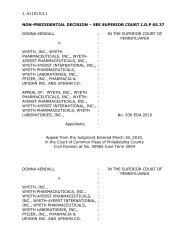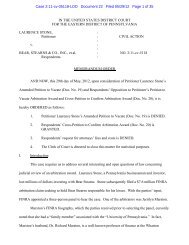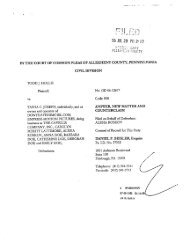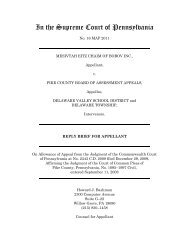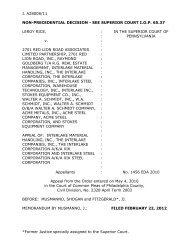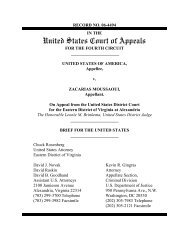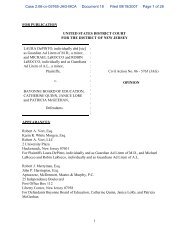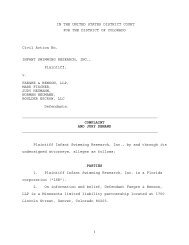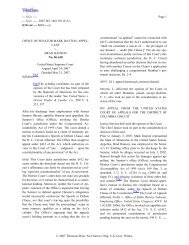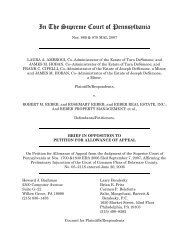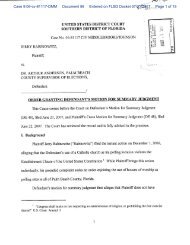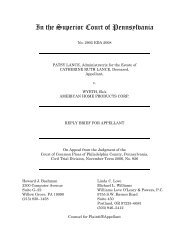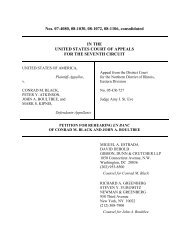In the Superior Court of Pennsylvania - How Appealing
In the Superior Court of Pennsylvania - How Appealing
In the Superior Court of Pennsylvania - How Appealing
Create successful ePaper yourself
Turn your PDF publications into a flip-book with our unique Google optimized e-Paper software.
which a reliable causal connection between E+P and breast cancer became known to<br />
<strong>the</strong>m, to <strong>the</strong> medical community, and to general public.<br />
Judge Tereshko granted summary judgment in favor <strong>of</strong> defendants in all 14<br />
<strong>of</strong> <strong>the</strong>se cases, holding that plaintiffs’ claims were time–barred due to expiration <strong>of</strong><br />
<strong>the</strong> applicable two–year statute <strong>of</strong> limitations. He concluded that plaintiffs had<br />
known or reasonably should have known that E+P had caused <strong>the</strong>ir breast cancer<br />
immediately upon being diagnosed with that disease. <strong>In</strong> his view, <strong>the</strong> discovery rule<br />
did not and could not toll <strong>the</strong> start <strong>of</strong> <strong>the</strong> two–year limitations period in any <strong>of</strong> <strong>the</strong>se<br />
cases.<br />
<strong>In</strong> 13 <strong>of</strong> <strong>the</strong> cases (all but Coleman), <strong>the</strong> trial court granted summary<br />
judgment in <strong>the</strong> absence <strong>of</strong> any discovery whatsoever, based solely on <strong>the</strong> plaintiff’s<br />
complaint and associated “fact sheet,” consisting <strong>of</strong> written responses to a court–<br />
approved written questionnaire. <strong>In</strong> many <strong>of</strong> those cases, <strong>the</strong> plaintiffs submitted<br />
affidavits in response to <strong>the</strong> summary judgment motions to provide fur<strong>the</strong>r factual<br />
support for <strong>the</strong>ir invocation <strong>of</strong> <strong>the</strong> discovery rule to make <strong>the</strong>ir lawsuits timely.<br />
The specific facts and procedural history <strong>of</strong> <strong>the</strong> 14 cases are set forth below:<br />
Manalo<br />
Plaintiff Graciana Manalo was diagnosed with breast cancer in November<br />
2000. R.2967a. She and her husband filed suit against Wyeth only on July 2, 2004.<br />
R.2947a. On her fact sheet, she indicated that sometime in November 2000 she was<br />
told that her condition “may be related” to <strong>the</strong> use <strong>of</strong> hormone <strong>the</strong>rapy medications.<br />
R.3060a.<br />
– 11 –



